|
|
|
Sort Order |
|
|
|
Items / Page
|
|
|
|
|
|
|
| Srl | Item |
| 1 |
ID:
121987
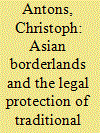

|
|
|
|
|
| Publication |
2013.
|
| Summary/Abstract |
Traditional knowledge related to biodiversity, agriculture, medicine and artistic expressions has recently attracted much interest amongst policy makers, legal academics and social scientists. Several United Nations organizations, such as the World Intellectual Property Organization (WIPO) and the Convention on Biological Diversity under the United Nations Environmental Programme (UNEP), have been working on international models for the protection of such knowledge held by local and indigenous communities. Relevant national, regional or provincial level legislation comes in the form of intellectual property laws and laws related to health, heritage or environmental protection. In practice, however, it has proven difficult to agree on definitions of the subject matter, to delineate local communities and territories holding the knowledge, and to clearly identify the subjects and beneficiaries of the protection. In fact, claims to 'cultural property' and heritage have led to conflicts and tensions between communities, regions and nations. This paper will use Southeast Asian examples and case studies to show the importance of concepts such as Zomia, 'regions of refuge' and mandala as well as 'borderlands' studies to avoid essentialized notions of communities and cultures in order to develop a nuanced understanding of the difficulties for national and international lawmaking in this field. It will also develop a few suggestions on how conflicts and tensions could be avoided or ameliorated.
|
|
|
|
|
|
|
|
|
|
|
|
|
|
|
|
| 2 |
ID:
121981
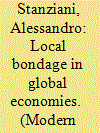

|
|
|
|
|
| Publication |
2013.
|
| Summary/Abstract |
This paper compares the definitions, practices, and legal constraints on labour in Britain, France, Mauritius, and Reunion Island in the eighteenth and nineteenth centuries. It argues that the way in which indentured labour was defined and practised in the colonies was linked to the definition and practice of wage labour in Europe and that their development was interconnected. The types of bondage that existed in the colonies were extreme forms of the notion, practices, and rules of labour in Europe. It would have been impossible to develop the indenture contract in the British and French empires if wage earners in Britain and France had not been servants. The conceptions and practices of labour in Europe and its main colonies influenced each other and were part of a global dynamic.
|
|
|
|
|
|
|
|
|
|
|
|
|
|
|
|
| 3 |
ID:
121986
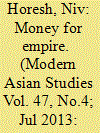

|
|
|
|
|
| Publication |
2013.
|
| Summary/Abstract |
Over the last three decades, a considerable body of English-language academic work has shed much light on Japan's empire-building project in Greater China during the first half of the twentieth century. At the same time, Japanese-language studies of the country's pre-war financial history have also grown in leaps and bounds. Yet, to date, neither body of literature seems to have fully examined what might appear to the naked eye as one of the critical pre-war junctures, where Japanese financial history converged on imperial policy and Chinese nationalist responses thereto.1 This paper will therefore aim to fill part of the gap by examining how the Yokohama Specie Bank, arguably the backbone of Japanese finance in China Proper, was affected by Chinese anti-foreign boycotts throughout the pre-war era (1842-1937).
|
|
|
|
|
|
|
|
|
|
|
|
|
|
|
|
| 4 |
ID:
121980
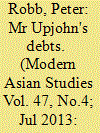

|
|
|
|
|
| Publication |
2013.
|
| Summary/Abstract |
The paper discusses the effective operation of money and credit among Europeans in Calcutta around 1800, arguing for the importance of informal processes and ties of friendship that facilitated, regulated, and enforced agreements, helping both to tide over individuals in times of economic stress and to underwrite the provision and transfer of capital. The argument is advanced by a detailed case-study of debts owed by one resident-Aaron Upjohn-to another, the diarist, Richard Blechynden, amid a web of acquaintance, officialdom, and law that variously ensured that the debts were honoured. It is defined as a support system among acquaintances, necessitated in part by shortage of money and abundance of risk.
|
|
|
|
|
|
|
|
|
|
|
|
|
|
|
|
| 5 |
ID:
121979
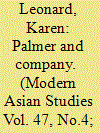

|
|
|
|
|
| Publication |
2013.
|
| Summary/Abstract |
Although the misreading of Hyderabad's early nineteenth century banking firm, Palmer and Company, as scandalous, illegal, and usurious in its business practices was contested at the time in Hyderabad, and at the highest levels of the East India Company in both Calcutta and London, such conspiracy theories have prevailed and are here challenged. The Eurasian William Palmer and his partner, the Gujarati banker, Benkati Das, are best understood as indigenous sahukars or bankers. Their firm functioned like other Indian banking firms and was in competition with them in the early nineteenth century as Hyderabad State dealt with the increasing power of the British East India Company and its man-on-the-spot, the Resident. Historians need to look beyond the English language East India Company records to contextualize this important banking firm more accurately.
|
|
|
|
|
|
|
|
|
|
|
|
|
|
|
|
| 6 |
ID:
121984
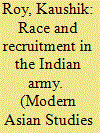

|
|
|
|
|
| Publication |
2013.
|
| Summary/Abstract |
In 1914, the Indian Army was deployed against the enemies of the British Empire. This paper analyses the administrative mechanism as well as the imperial assumptions and attitudes which shaped the recruitment policy of the Indian Army during the First World War. From the late nineteenth century, the Martial Race theory (a bundle of contradictory ideas) shaped the recruitment policy. With certain modifications, this theory remained operational to the first decade of the twentieth century. The construction of the 'martial races' enabled the British to play-off different communities against each other to prevent the emergence of a unified anti-British sentiment among the colonized. During the Great War, faced with the rising demands of manpower, the army was forced to modify the Martial Race theory. However, a conscript army did not emerge in British-India. This was due to imperial policies, the inherent social divisions of Indian society, and because the demands for military manpower remained relatively low in comparison to India's demographic resources. Due to innovations in the theory and praxis of recruitment, the volume of recruitment showed a linear increase from 1914 to 1918, with maximum intensification of recruitment occurring during 1917 and 1918. But as the war ended in November 1918, despite the entry of several new communities, the bulk of the Indian Army still came from the traditional martial races.
|
|
|
|
|
|
|
|
|
|
|
|
|
|
|
|
| 7 |
ID:
121983
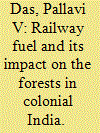

|
|
|
|
|
| Publication |
2013.
|
| Summary/Abstract |
Recent studies have stressed the need for micro-histories of the environment so that important differences and similarities at local, regional and national level might be revealed. This paper analyses the process and patterns of environmental degradation at regional level by taking the case of deforestation in colonial Punjab by studying its implication at the level of empire. More specifically, it examines three aspects of how the operation and expansion of railways from 1869 to 1884, a peak period of railway expansion, affected the forests of the Punjab's plains. First, the paper analyses the reasons for large-scale railway expansion in the Punjab by discussing spatial and temporal expansion. Secondly, the impact of the railway firewood demand on the Punjab's forests between 1860 and 1884 is examined, specifically, the conditions that facilitated the increased dependence of the railways on firewood. Next follows an examination of the temporally varying nature of deforestation, given that railway firewood demand was determined by railway line openings. This section also includes a discussion on the nature of the colonial state response to the deforestation crisis and its role in maintaining the fuel supply to the railways. Finally, in the context of deforestation in the Punjab, the paper discusses how and why railway fuel changed from firewood to coal.
|
|
|
|
|
|
|
|
|
|
|
|
|
|
|
|
| 8 |
ID:
121978


|
|
|
|
|
| Publication |
2013.
|
| Summary/Abstract |
This paper discusses the rise of the East India Company in the contested political world of eighteenth century India, with reference to the manner in which economic power was deployed to enhance military power. It is shown that there was only one successful model of military-fiscal strategy during this time, and that the Company's success was due to interactions between three factors-taxable resources, the strategies of its rivals, and institutional choices.
|
|
|
|
|
|
|
|
|
|
|
|
|
|
|
|
| 9 |
ID:
121985


|
|
|
|
|
| Publication |
2013.
|
| Summary/Abstract |
From the end of the fifteenth century, the Ming state redirected the entire flow of the Yellow River into the course of the Huai River in order the facilitate the transport of tribute grain. This shifted the major problems of water control from the middle and lower reaches of the Yellow River to the Huaibei region. Huaibei was viewed as 'a local interest', as opposed to the 'general interests' represented by the central government, and was sacrificed for those general interests. These policies, which were continued under the Qing dynasty, created widespread and frequent flooding in the region, causing short-term famine and destruction and leading to long-term economic decline.
|
|
|
|
|
|
|
|
|
|
|
|
|
|
|
|
| 10 |
ID:
121982
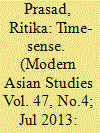

|
|
|
|
|
| Publication |
2013.
|
| Summary/Abstract |
This paper traces the establishment of standardized railway time in colonial India between 1854 and 1905, and explores how the colonized-as passengers and population-negotiated the temporal re-structuring introduced through railways. Millions were affected by the process through which the time of a single meridian was selected as an all-India railway time, and gradually deemed civil time, continuing even today as Indian Standard Time. The paper explores everyday responses to this dramatic change in 'time-sense' engendered through railways, both as speedy transport and as standardized time. This allows for a historical analysis of how individuals and societies deal in practice with abstract technological transformations, and of how colonized populations have navigated the modernizing intervention of imperialist states. It argues that the ways in which the population of colonial India accepted, contested, and appropriated the temporal standardization instituted through railways and railway time challenged imperial policies determined by reified presumptions of metropolitan versus colonial 'time-sense'. Since these responses were often analogous to how people and societies across the globe were responding to temporal standardization, they disrupt imperial strategies that used time-sense to locate colonized populations outside of History, in effect excluding them from their own present. They thus serve to materially de-stabilize a narrative of colonial time-lag and to reclaim the historical present as a time in which the colonizer and colonized exist contemporaneously. Consequently, they reconfigure modernity as an experiential rather than as a normative historical present.
|
|
|
|
|
|
|
|
|
|
|
|
|
|
|
|
|
|
|
|
|